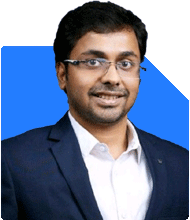Hardik Parikh | Answer |Ask -Follow
Tax, Mutual Fund Expert - Answered on Apr 06, 2023
He also holds an MBA degree from IIM-Indore.
Hardik, who began his career as an equity research analyst, founded his own advisory firm, Hardik Parikh Associates LLP, which provides a variety of financial services to clients.
He is committed to sharing his knowledge and helping others learn more about finance. He also speaks about valuation at different forums, such as study groups of the Western India Regional Council of Chartered Accountants.... more

my daughter is working with AIG , London since Jan '2022. Now that she has become NRI , is she required to close all her existing savings account and open new NRE and NRO account. Also she has some personal loan so if those accounts are closed , how will she repay loan.
Savings Account: Your daughter should inform her bank about her change in residential status and convert her existing savings account to an NRO (Non-Resident Ordinary) account. This will allow her to manage her income from sources within India, such as rent or interest.
NRE Account: It is advisable for her to open an NRE (Non-Resident External) account, which will allow her to repatriate funds back to India in Indian Rupees. This account is particularly useful for transferring her salary or other income earned in foreign currency.
Personal Loan Repayment: Since her existing savings account will be converted to an NRO account, she can continue to repay her personal loan using this account. The loan repayment process should not be affected by the change in her residential status.
Please note that these are general recommendations, and your daughter should consult with her bank and a tax professional to ensure she complies with all regulations and reporting requirements for NRIs.
You may like to see similar questions and answers below
Vivek Lala |323 Answers |Ask -Follow
Tax, MF Expert - Answered on Apr 21, 2023
Samkit Maniar | Answer |Ask -Follow
Tax Expert - Answered on Mar 05, 2024
Vivek Lala |323 Answers |Ask -Follow
Tax, MF Expert - Answered on Oct 25, 2024
Ramalingam Kalirajan |10881 Answers |Ask -Follow
Mutual Funds, Financial Planning Expert - Answered on Jan 16, 2025
Dr Dipankar Dutta |1839 Answers |Ask -Follow
Tech Careers and Skill Development Expert - Answered on Dec 13, 2025
Dr Dipankar Dutta |1839 Answers |Ask -Follow
Tech Careers and Skill Development Expert - Answered on Dec 13, 2025
Mayank Chandel |2575 Answers |Ask -Follow
IIT-JEE, NEET-UG, SAT, CLAT, CA, CS Exam Expert - Answered on Dec 13, 2025
Radheshyam Zanwar |6742 Answers |Ask -Follow
MHT-CET, IIT-JEE, NEET-UG Expert - Answered on Dec 13, 2025
Mayank Chandel |2575 Answers |Ask -Follow
IIT-JEE, NEET-UG, SAT, CLAT, CA, CS Exam Expert - Answered on Dec 13, 2025
Mayank Chandel |2575 Answers |Ask -Follow
IIT-JEE, NEET-UG, SAT, CLAT, CA, CS Exam Expert - Answered on Dec 13, 2025
Kanchan Rai |646 Answers |Ask -Follow
Relationships Expert, Mind Coach - Answered on Dec 12, 2025
Ravi Mittal |677 Answers |Ask -Follow
Dating, Relationships Expert - Answered on Dec 12, 2025
Ramalingam Kalirajan |10881 Answers |Ask -Follow
Mutual Funds, Financial Planning Expert - Answered on Dec 12, 2025
Ramalingam Kalirajan |10881 Answers |Ask -Follow
Mutual Funds, Financial Planning Expert - Answered on Dec 12, 2025



























